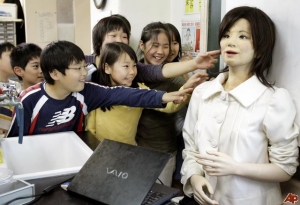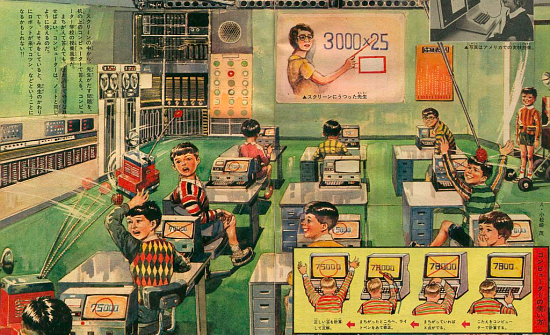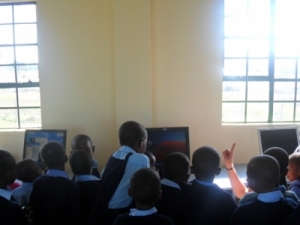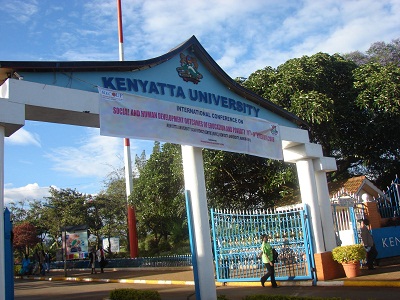A new working paper released by the Global Economy and Development at Brookings concludes that if smartly and strategically deployed, modern information and communications technology (ICT) holds great promise in helping bring quality learning to some of the world’s poorest and hardest-to reach communities.
As part of the Brooke Shearer Working Paper Series, the paper entitled “A New Face of Education Bringing Technology into the Classroom in the Developing World” focused on the potentials of using information and communication technologies to improve teaching and learning in the developing nations.
Using two examples of ICTs application in education from Peru and Pakistan – “failed” and “successful”, the paper stated that experience shows that while there are numerous examples of how technology is used to the great benefit of teachers and learners alike, there are also many cases in which it does little to impact educational processes and outcomes.
The example from Peru, South America recalls a number of colorful laptops sitting in a corner of a classroom covered with dust. It argues that the One Laptop Per Child (OLPC) program which was arranged by the Ministry of Education, had the good intention of improving students’ information communication technology (ICT) skills, as well as their content-related skills through the laptops. But because there was no proper support for teacher training in how the laptops are to be used; no follow-up or repair and maintenance contingencies; and with outdated and bug-infested software, the laptops are seen as unusable and serve little purpose.
On the other hand, the successful example recalled a young girl in the small village of Hafizibad in Pakistan using her mobile phone to send an SMS message in Urdu to her teacher. After sending, she receives messages from her teacher in response, which she diligently copies by hand in her notebook to practice her writing skills. She does this from the safety of her home, and with her parents’ permission. The girl is part of a Mobilink-UNESCO program to increase literacy skills among girls in Pakistan which has shown some positive improvements so far.
Based on the above examples, the authors identified some barriers to quality education in the developing world.
Barriers to Learning for All – Primary, Secondary & Higher Education
- Distance and Cost – limited availability of schools in remote, inaccessible, or particularly impoverished regions of developing countries with direct and indirect costs barriers.
- Quality of Faculty/Teachers – poor quality of teacher training programs, lack of in-service training for those on the field, and lack of graduate level faculty members affect how much time teachers spend and how they teach.
- Resources, Materials and Language – limited budget for tertiary education leads to poor quality teaching and learning materials, in appropriate format and language are barriers especially to the early learners.
- Management – poor education system management including unwieldy teacher payment systems, limited information collection and management capabilities, and poor learning assessment processes.
- Students Academically Unprepared – due to the poor quality of education at the basic and secondary levels, students entering higher education are unprepared and usually with poor performance.
The paper continues that even with the extraordinary growth in access to ICT, its use in multiple sectors of society is uneven because of certain interconnected conditions that needs to be taken care of including the following:
Enabling Conditions for Effective Technology (ICT) Use
- Access to Electricity – the use of ICTs requires access to power such as electricity, solar power, batteries, etc.
- Internet Connectivity – access to the Internet and wireless capabilities is key for the use of ICTs in classroom
- Human Resource Capacity – the need to attract, recruit and train skilled and qualified IT professionals
- Political will and Management – development of national and institutional ICT policies and the will to act on them
- Financial Resources – most of the developing countries need external support in implementing successful ICT projects in the educational sector
- Link between Infrastructure Availability and Ability to Integrate – these countries also need to effectively integrate ICTs into the various sectors once the infrastructure is in place.
The paper then mentioned different types of ICTs for use in education in the developing nations.
Technology Types and their Prevalence
- Radio – Even though is being referred to as “old technology,” radio and radio instruction such as Interactive Radio Instruction (IRI) has been utilized across the developing world as a tool to help facilitate learning and increase access to educational opportunities.
- Television – Television is used to supplement classroom instruction with educational videos that teach and support lessons in language learning, mathematics, history, life skills and among other subjects.
- Computers – Personal computers (PCs) are one of the most frequently cited and used forms of technology in education in the developing world and act as indicators of technological progress.
- Mobile Phones – Cell phones and smart phones have been seen as increasingly useful educational tools in developing countries.
- Tablets and E-readers – Tablet PCs like the iPad and ereaders are becoming a trend in education technology, and many experts see an important future for them in developing countries, due to the relatively low procurement cost.
- Multimedia Projectors – These are devices used to project documents and/or computer images onto a wall in an effort to display the image to an entire classroom and allow the teacher to interact with the material along with the students, etc.
- Open Educational Resources (OER) – OER are “teaching, learning, and research resources that reside in the public domain or have been released under an intellectual property license that permits the free use and repurposing by others”.
- Cloud Computing – Cloud computing allows organizations to increase computing capacity or add computing capabilities without needing to invest in infrastructure or train additional personnel.
The paper suggests seven guiding principles for the use of ICTs in education to be able to achieve the intended teaching and learning goal.
Seven Principles for Smart use of Technology in Education
- Educational Problem First – First, identify the educational problem that needs to be addressed, and then assess which, if any, is the best technology to do the job.
- Added Value – make sure that the technology will add value to other existing solutions.
- Sustainability – Carefully consider the full range of enabling conditions such as the total cost of ownership, the ultimate relevance of the technology to the particular location, access to appropriate infrastructure, and human resource capacity.
- Multiple Uses -Where possible, select a technology and design an intervention so that the technology can be used for multiple purposes.
- Lowest Cost – While there may be many different types of technologies that can provide the assistance sought, other things being equal, it is best to select the least expensive option for the job(s) desired.
- Reliability – Before deploying a technology, ensure it is reliable and will not rapidly break down. Nothing slows a project down more than unresolved problems.
- Ease of Use – Finally, in educational interventions, technology should be easy to use.
It concludes that, if these principles are followed it can help avoid many future problems and, more importantly help leverage the power of ICT in educating young people in some of the poorest regions of the world.
The full paper can be accessed here.






















































